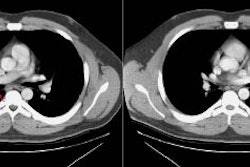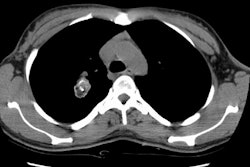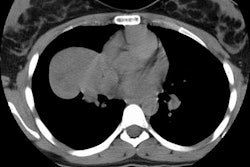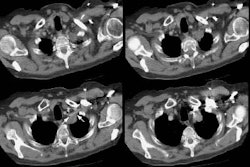Distinction of consolidative bronchioloalveolar carcinoma from pneumonia: do CT criteria work?
Aquino SL, Chiles C, Halford P
OBJECTIVE: The purpose of this study was to compare the CT findings of consolidative bronchioloalveolar carcinoma (BAC) with consolidative infectious pneumonia and determine if any pattern revealed by CT is more specific for one disease than the other and may therefore expedite a diagnosis of consolidative BAC using CT. MATERIALS AND METHODS: The CT findings in 20 patients with consolidative BAC and 20 patients with consolidative infectious pneumonia were reviewed. Radiologic features included the presence and distribution of consolidation, nodules, and ground-glass opacities; the presence of air bronchogram, mucous bronchogram, contrast enhancement, cysts, or cavities within the consolidation; and pulmonary fibrosis or significant parenchyma scarring. RESULTS: Statistically significant (p < .003) findings that were more often seen on CT scans of patients with consolidative BAC than on those of patients with consolidative pneumonia included coexisting nodules (p < .001) and a peripheral distribution of consolidation (p < .001). CONCLUSION: When nonresolving peripheral consolidative pneumonia, especially with associated nodules, is shown on CT, radiologists should suspect BAC when the patient is an adult with normal immunity.



